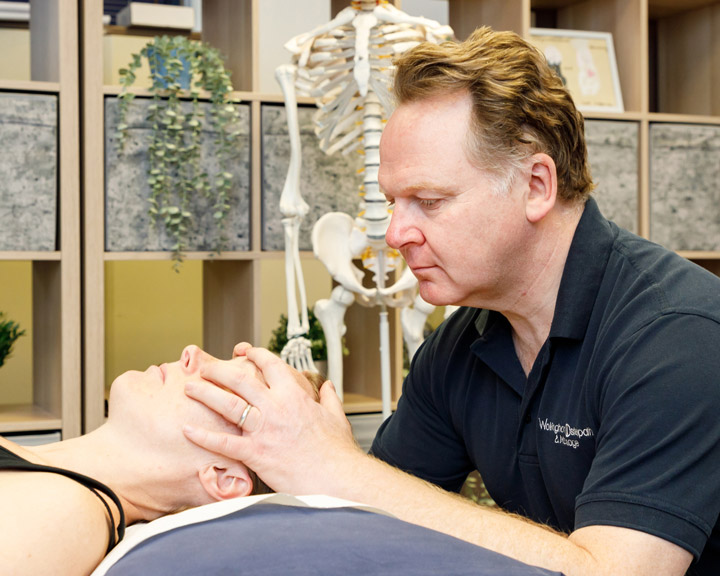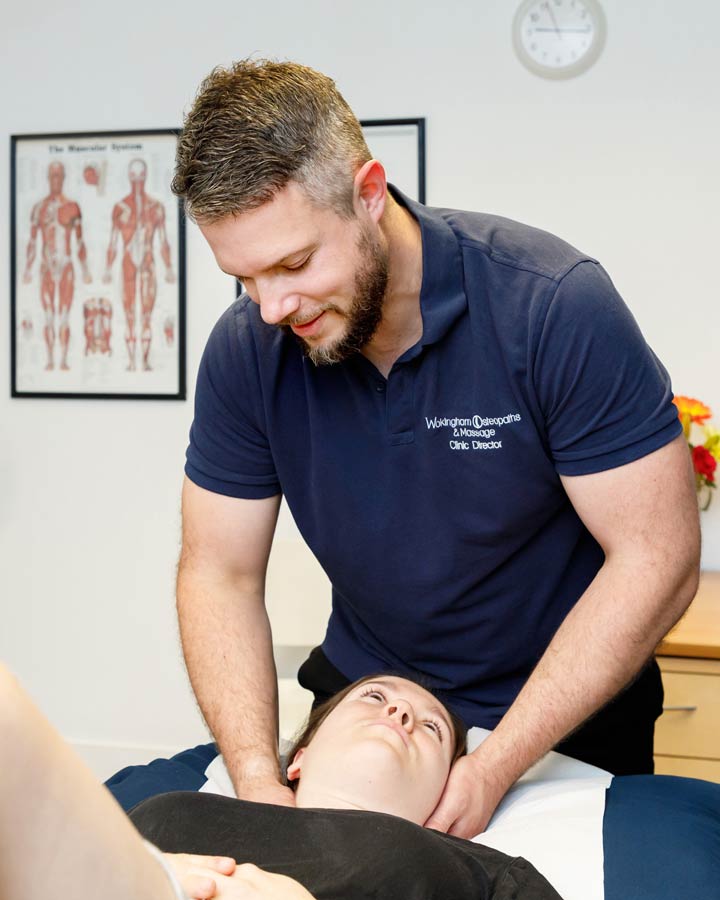Headaches & Migraines
Do you suffer from headaches or migraines? If you do, you’re not alone. According to the World Health Organisation half to three quarters of adults aged 18-65 years have had a headache in the last year. Among those individuals 30% or more report migraine.
Headaches are one of the most common disorders of the nervous system but they are often underestimated, under-recognized and under-treated. Those suffering from recurrent headaches are affected tremendously by the pain, disability, and damaged quality of life.1
To receive appropriate treatment for these complicated disorders patients require accurate diagnosis, appropriate treatment, simple lifestyle changes, and education.
Headaches and migraines are diagnosed using the criteria in the International Classification of Headache Disorders (ICHD-3)2. In this classification they are divided into primary and secondary headache.

PRIMARY HEADACHE
These are headache disorders not caused by anything else.
Migraine without Aura is a headache disorder with attacks lasting between 4-72 hours. Typically, these headaches are on one side of the head, they have a pulsating, throbbing quality and are of a moderate or severe intensity. They are aggravated by routine physical activities such as walking or climbing stairs. They will be accompanied by at least one of the following: – nausea and/or vomiting, sensitivity to light (photophobia) and sensitivity to sound (phonophobia). Some may also experience acute sensitivity to strong smells (osmophobia).
Migraine with Aura can occur with or without a headache. The aura will last up to one hour and can affect vision, senses such as pins and needles and numbness, speech and/or language. Visual aura is the most common type occurring in over 90% of patients with migraine with aura. This often presents as a zigzag feature near the point of fixation that may gradually move left or right.
Many patients recognise the onset of migraine by the symptoms that start before the actual headache. This is known as the prodrome and it may include a variety of presentations including fatigue, difficulty in concentrating, neck stiffness, sensitivity to light, blurred vision and yawning. This can last for several hours or even occur over several days.
After the headache there can also be a postdrome phase which can also be described as a ‘migraine hangover’. During this stage of the migraine patients may experience symptoms such as fatigue, body aches, elated or depressed mood, trouble concentrating and sensitivity to light.
When we consider the four phases of migraine it is clear to see that it is much more than ‘just a headache’, it can be an extremely debilitating condition which can have a profound effect on the life of the person. The good news is that osteopathy can help with migraine prevention.
Tension type headaches (TTH) are another very common group of primary headaches. Studies estimate that in the general population there is a prevalence between 30% and 78%. Symptoms include a sensation of pressure or tightness around the head, which sometimes feels as if it spreads to or from the neck. The pain is described as being moderate and usual activities are not limited by the discomfort. Patients will often describe it as a band around the head. It may be caused by stress or possibly musculoskeletal issues in the neck. Episodic TTH can last from a few hours to several days but the chronic type can be quite disabling as it can be unremitting.
Trigeminal autonomic cephalalgia (TAC) are a relatively uncommon group of primary headaches affecting roughly 1 in 1000 adults with increased incidence in males 3:1. These headaches can be some of the most painful types with cluster headaches also known as suicide headaches due to their severity. The headache is usually one-sided with cranial parasympathetic autonomic features such as tearing, nasal congestion, a runny nose, facial sweating, shrinking of the pupil, drooping of the eyelid and oedema in the eyelid on the affected side. A cluster headache will typically last between 15-180 minutes when untreated, and can occur up to eight times a day. Attacks can occur for weeks or months separated by remission periods lasting months or years. During an attack patients are not usually able to lie down and they will often pace up and down.
SECONDARY HEADACHE
Secondary headaches are present as a symptom of another disorder. These headaches are the types that patients always worry about as they may range from the benign such as sinus or neck problems to the severe sub-arachnoid haemorrhage and intracranial neoplasia. It is estimated that over 115 types of secondary headache can be caused by an underlying fatal condition, so they are a class of headache that it is important to have an awareness of in practice. In reality most secondary headaches will be diagnosed outside of the osteopathic clinic as most patients will have seen their doctor or gone to hospital first.3,4,5,6
This makes it vital to take an accurate detailed case history. You will be asked questions about how often you have had the headache, how long you have had it and how long they last, where the headache is located and the quality of pain, are there any other symptoms, do you have any other conditions that affect the headache.
1World Health Organisation Headache Disorders Key Facts 8 April 2016
2IHS Classification ICHD-3 The International Classification of Headache Disorders – ICHD-3
3Tabatabai RR, Swadron SP. Headache in the emergency department: avoiding misdiagnosis of dangerous secondary causes. Emerg Med Clin North Am. 2016;34(4):695-716.
4 Ravishankar K. Which headache to investigate, when, and how? Headache. 2016;56(10):1685-1697.
5 Dodick, DW. Clinical clues and clinical rules: primary vs secondary headache. Adv Stud Med. 2003;3(6C):S550-S555.
6 Ramirez-Lassepas M, Espinosa CE, Cicero JJ, Johnston KL, Cipolle RJ, Barber DL. Predictors of intracranial pathologic findings in patients who seek emergency care because of headache. Arch Neurol. 1997;54(12):1506-1509.
7Do TP, Remmers A, Schytz HW, et al. Red and orange flags for secondary headaches in clinical practice: SNNOOP10 list.. Neurology. 2019;92(3):134-144.
How Wokingham Osteopaths can help your headache or migraine
Upon visiting the clinic, your osteopath will go through a detailed case history in order to rule out different causes of migraines and be able to specify a course of treatment that will be aid you in alleviating your symptoms by getting to the root cause of the issue.
After the case history, a physical examination will help to pin point the suspected cause and your osteopath will discuss their findings and gain consent before beginning treatment as part of the first visit.





